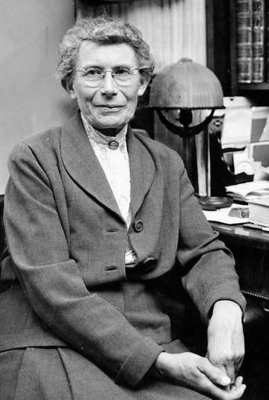
Inge Lehmann was a Danish seismologist who discovered that the Earth has a solid inner core inside a molten outer core.
Inge Lehmann was born in Copenhagen, to Ida Sophie Torsleff and Alfred Georg Ludvik Lehmann, a psychologist. In 1907, she started her studies in mathematics, chemistry and physics at the University of Copenhagen, but discontinued it due to poor health. She took a break between 1911 and 1918, worked in an actuary office and resumed studies in 1918. She completed her degree in physical science and mathematics in 1920.
In 1925, Inge Lehmann became an assistant to the head of the Royal Danish Geodetic Institute. Her work involved setting up seismological observatories in Denmark and Greenland. She became interested in seismology and went on to study geodesy (the science of making measurements: related to earth) formally at the University of Copenhagen and received her post graduation in the subject in 1928. Inge Lehmann was appointed the state geodesist and was made the head of the Seismological Department of the Royal Danish Geodetic Institute She was responsible for running seismographic observatories in Copenhagen and Russia. By then scientists had discovered that by using seismographic data from earthquakes, Earth’s interior could be studied. By analysing seismic waves from several earthquakes scientists had concluded that earth has a large, liquid, metallic core.
It was only after the 1929 earthquake in New Zealand and subsequent work by Lehmann, that we got a better understanding of the Earth’s core.
In 1929, while examining seismograph data from New Zealand quake. Lehmann noticed oddities in the wave patterns. The seismographs in Russia collected seismic waves with amplitudes that were higher than expected and some seismic waves travelling away from the earthquakes focus appeared to have been “bent”. She concluded Earth’s interior must consist of a solid inner core and a liquid outer core and the waves were being refracted and reflected at the boundary between these two layers. In 1936, Lehmann published her findings in a paper.
It was not until 1970 that seismologists tested Lehmann’s proposal. The boundary between the inner and outer core which occurs at a depth of roughly 5,100 km is known as the Lehmann discontinuity. Lehmann retired from her position at the Geodetic Institute in 1953, but continued her scientific research. In 1987, age 99, she wrote her last scientific article!
Picture Credit : Google




